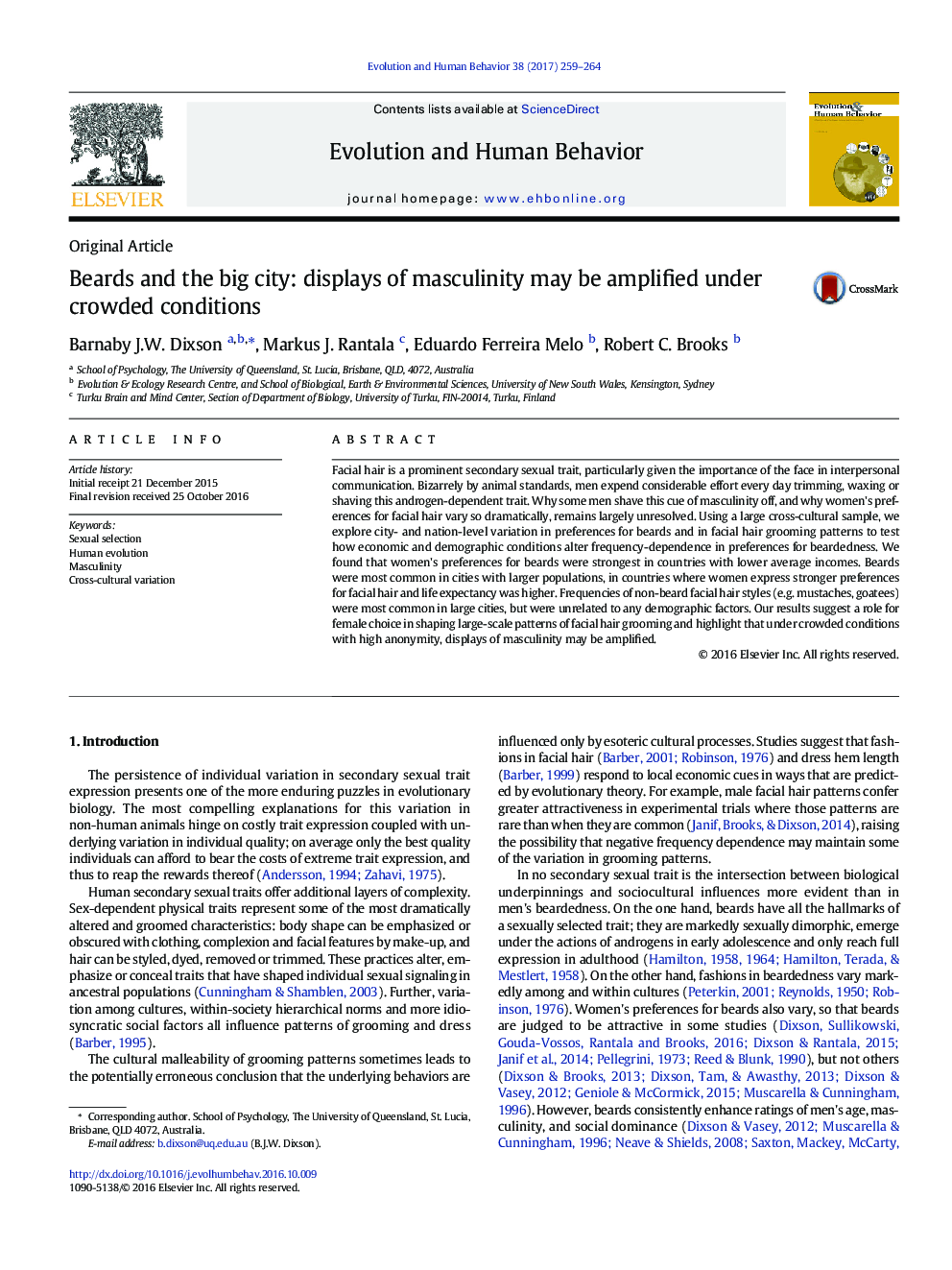| Article ID | Journal | Published Year | Pages | File Type |
|---|---|---|---|---|
| 5044877 | Evolution and Human Behavior | 2017 | 6 Pages |
Facial hair is a prominent secondary sexual trait, particularly given the importance of the face in interpersonal communication. Bizarrely by animal standards, men expend considerable effort every day trimming, waxing or shaving this androgen-dependent trait. Why some men shave this cue of masculinity off, and why women's preferences for facial hair vary so dramatically, remains largely unresolved. Using a large cross-cultural sample, we explore city- and nation-level variation in preferences for beards and in facial hair grooming patterns to test how economic and demographic conditions alter frequency-dependence in preferences for beardedness. We found that women's preferences for beards were strongest in countries with lower average incomes. Beards were most common in cities with larger populations, in countries where women express stronger preferences for facial hair and life expectancy was higher. Frequencies of non-beard facial hair styles (e.g. mustaches, goatees) were most common in large cities, but were unrelated to any demographic factors. Our results suggest a role for female choice in shaping large-scale patterns of facial hair grooming and highlight that under crowded conditions with high anonymity, displays of masculinity may be amplified.
